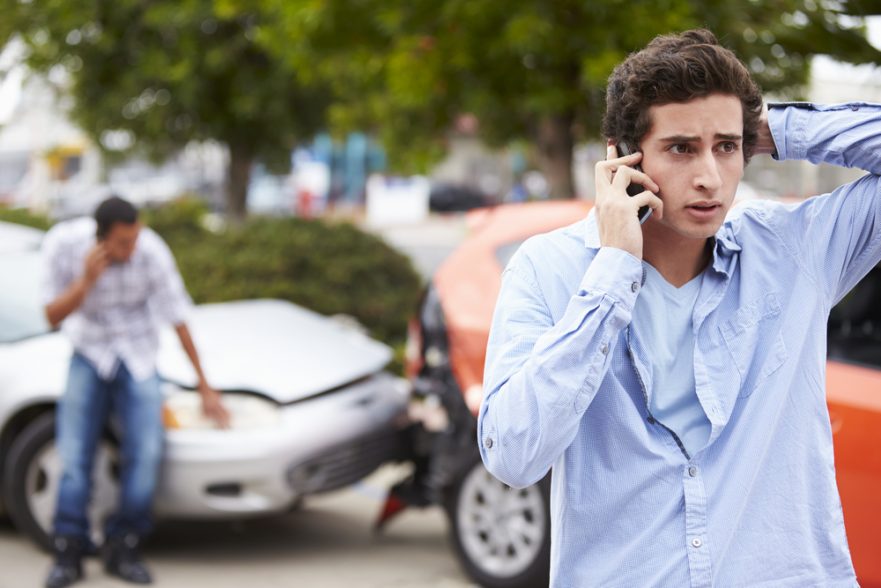According to data compiled by government agencies, driver behavior is the leading cause of car accidents in the U.S. Driver distraction, speeding, intoxication, and other behaviors engaged in by motorists cause the vast majority of crashes.
Although car accidents can happen almost anywhere, one thing that you can learn from reviewing government studies is that certain locations appear with greater frequency than others as the sites for motor vehicle collisions. Knowing the causes of highway crashes and modifying your behavior is certainly important for making roads safer, but it is equally important for you to be able to identify the most common locations where car accidents occur, in order to heighten awareness of their dangers and risks.
Deadly consequences of car accidents
Traffic collisions in the U.S. claimed the lives of 36,120 people in 2019, with another 4.4 million people suffering serious injuries requiring medical treatment. Oregon alone had 446 fatalities and 27,717 people injured in 50,099 traffic accidents, according to the most recently available data from the Oregon Department of Transportation.
The data attributing most crashes to driver error appears to be borne by an analysis of the causes of the accidents occurring in Oregon. The following are the top 10 causes of collision in Oregon, according to the state DOT:
- Failing to avoid parked or stopped vehicles.
- Failing to yield the right of way.
- Failing to stay on the roadway.
- Driving while distracted.
- Driving at speeds unsafe for road or weather conditions.
- Following too closely to other vehicles.
- Failing to stay in lane.
- Turning left into the path of oncoming traffic.
- Failing to decrease speed when approaching slower vehicles.
- Disregarding traffic signals.
Any of these common behaviors may increase the risk of colliding with another vehicle, a pedestrian or bicycle rider, or a fixed object, such as a road sign or guardrail. Another factor that increases the risk of a car crash is your location.
Common locations for car accidents
Regardless of what causes them, collisions that involve two cars crashing into each other or a car hitting a pedestrian, bicycle rider, or a stationary object on the side of the road appear to occur with a degree of frequency at certain locations. The following are a few locations where your risk of being involved in a collision may be at its greatest.
Stop signs: A stopped car or one slowing to come to a stop may become the target for another vehicle ramming it from the rear. It may be the result of the approaching driver not paying attention or approaching at an excessive rate of speed. Another type of stop-sign accident occurs when a driver fails to come to a complete stop and rolls through and into the intersection, where it collides with another vehicle.
Rural roads and highways: As a general rule, fewer vehicles on rural roads may contribute to drivers losing focus and not concentrating on the road and maintaining control over their car. Cars may veer off the road and crash into trees, utility poles, and other types of stationary objects. Another danger of driving on rural roads comes from deer and other animals that may cross in their path. Drivers may swerve in an effort to miss the animal and lose control over their vehicle.
Traffic Signals: The risk of a rear-end collision at a red light is similar to what takes place at stop signs. Cars going through an intersection controlled by a traffic signal may accelerate in an attempt to beat a yellow light, and collide with cars or trucks entering the intersection.
Parking lots and parking garages: If you have ever driven through a parking lot or in a parking garage, you know the dangers posed by pedestrians walking between parked cars and vehicles moving through the facility as drivers back out of parking spaces or attempt to race into a parking space ahead of another motorist. The chaos of parking lots and parking garages frequently lead to collisions, resulting in injuries and property damage.
Two-lane undivided roads: Two-lane roads without a center median increase the risk of a distracted, sleepy, or intoxicated driver drifting into the oncoming lane of traffic. Head- on-collisions cause serious injuries and fatalities due to the force of the impact of two vehicles speeding toward each other.
Intersections: Cars entering without having the right of way, vehicles turning and failing to yield the right of way to oncoming traffic, and cars failing to yield to pedestrians are only a few of the reasons that make intersections frequent locations for accidents.
Adjusting your driving habits to avoid the behaviors that cause car accidents and being careful whenever driving in any of the locations known for being prone to car accidents may keep you and others safe.
Know your rights in the event of a crash
If the negligence of another motorist causes you or a member of your family to be injured in a car accident, you need the advice and guidance of a Bend personal injury attorney. You may be entitled to compensation, and a personal injury attorney can advise you about your rights and options for enforcing them.

